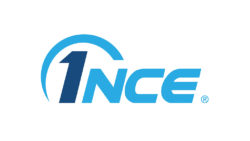Intermediate bulk containers (IBCs) are monitored globally with the Industrial IoT to increase visibility and control in logistics. For this purpose, every IBC (even older ones) is equipped with Packwise’s Smart Cap sensor box. The acquired sensor data is transmitted via a mobile communication with a SIM from 1nce. Users can then view all information in the Packwise Flow web application.
The challenge: No traceability during the use of the IBC and its contents.
The Dresden-based startup Packwise is dedicated to digitization around the preparation and reuse of carriers for liquid or free-flowing contents – the well-known IBC tanks (Intermediate Bulk Container). The most common variant is the composite IBC (C-IBC): A metal cage on a pallet with a plastic container inside. The maximum period of use is limited by law to five years. They are then either disposed of or – if no hazardous materials were transported – reprocessed and sold, for example to private individuals.
Given the cost per IBC and the comparatively short period of use, it is important for companies in the food or chemical industry to make optimum use of the containers. The precise overview of the IBC fleet in use enables perfect optimization of processes. This includes, for example, transporting the same quantities with fewer containers, better route planning, fewer losses due to theft or damage, automated reordering or predictive production planning.
The startup has developed the Packwise Smart Cap for this purpose, which is retrofitted to each container with an adhesive film as a smart tracking solution. It connects to the Industrial IoT and sends current status data such as position, fill quantity or temperature to Packwise Flow, a software platform in the cloud.
The solution: A retrofittable IoT device that connects large IBC fleets to the cloud
The Packwise Smart Cap is an easy-to-install sensor box connected to the Industrial IoT. It measures important parameters and transmits them to the digital twin of the IBC container in the Packwise Flow web application. There, the data is processed and visualized. The companies thus have control over the following measured values at all times:
- Fill level: The Smart Cap measures to within 5-10 liters how full the IBC currently is.
- Location: The Smart Cap shows the location of the IBC to within 3 meters (indoor and outdoor).
- Condition: The Smart Cap detects if the IBC is in a tilted position or subject to a large acceleration.
- Movement: The Smart Cap reports movements of the container, for example during transport, via defined transmission intervals.
- Temperature: The Smart Cap continuously determines the ambient temperature of the IBC and reports critical temperatures.
For Packwise Smart Cap communication, the company relies on mobile connectivity with 1NCE . This is because communication between the sensor and the cloud platform must be reliable, in warehouses as well as outdoors anywhere in the world.
With the 1NCE IoT Flat Rate, Packwise Smart Cap gets the simplest solution imaginable: mobile communication via a single SIM card that works with the best available radio technology at any given time, preferably with the NB-IoT or LTE-M device networks. They offer years of battery life and low maintenance costs due to their power-saving technology.
A worldwide unit price with no additional roaming costs or fees for installation or setup enable easy calculation of the operating costs of the entire use case. Connectivity integration is simple and requires no cumbersome configuration.
The result: Better utilization of the IBC and greater sustainability
The Packwise web application displays the core data of each individual container as well as container groups. With its help, users can manage their IBC fleet, provide relevant data to their customers or trigger ordering processes in their ERP systems via interfaces.
In this way, not only can the number of empty IBCs be significantly reduced. Packaging becomes the connecting element between supplier and customer. The shared view of stocks, temperature trends and arrival times makes it possible to focus on the essentials when working together. . In doing so, companies save resources in two senses: those of the environment and those of the company (possibly also of the employees).







